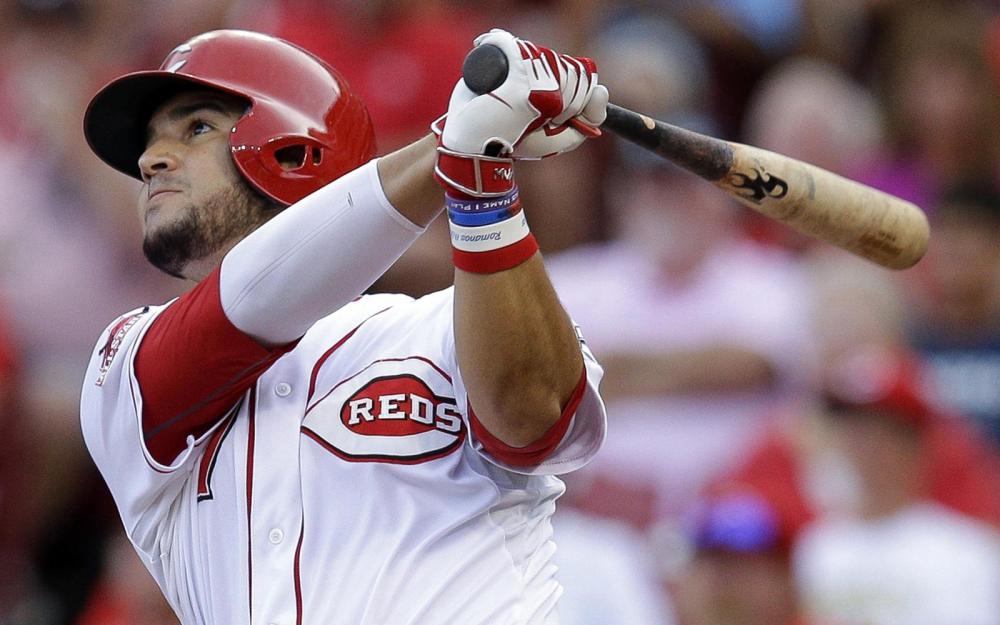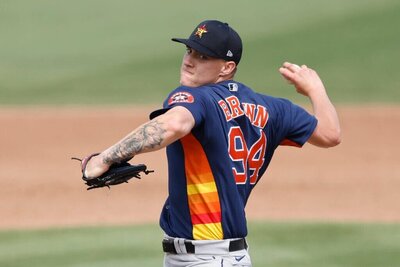Paul DeJong: DeJong went 2-3 with a double, a stolen base, and three RBIs on Saturday against the Brewers. After slashing .285/.325/.532 and placing second in NL Rookie of the Year award voting last year, DeJong has struggled to produce in 2018 and had posted a .239/.319/.439 slash line entering Saturday's game. That doesn't tell the whole story though; DeJong's underlying statistics actually suggest that he's been pretty much the same hitter this season but has been the victim of some bad luck (and seen some expected regression from last season). Despite seeing a decrease in his home run (1.6% decrease) and extra base hit (2.5% decrease) rates between 2017 and 2018, DeJong has been hitting the ball harder (39.2% hard hit rate this season, 36.4% last year) and in the air more frequently (0.44 GB/FB ratio in 2018, 0.49 last year) while limiting popups (DeJong's IF/FB ratio is slightly better this season compared to last), so expect DeJong to hit for more extra bases over the rest of the season. Although DeJong's .349 BABIP from last season was likely bound for regression, his .281 mark this year should rise based on his strong contact quality and batted ball (DeJong also owns an impressive 30% line drive rate this season -- the same rate he posted last year) profiles. Expect DeJong's numbers to improve over the rest of the season as his luck catches up with him, and buy low if you can.
Eugenio Suarez: Suarez went 1-3 with a walk and a pair of strikeouts against the Giants on Saturday. Suarez has been a pleasant surprise for the Reds this season, and his breakout has come on the back of a ridiculous contact quality profile: Suarez's 50.7% hard hit rate is the best in the major leagues, and his 8.3% soft contact rate ranks second only behind his teammate Joey Votto (if he keeps it up, Suarez will finish the season with a hard hit rate that tops his previous career average by nearly 16 points and tops his mark from last year by closer to 17 -- an abnormal occurrence worth keeping an eye on). Suarez has been hitting the ball so well (and putting it in the air frequently with a 0.63 GB/FB ratio) that his 5.7% home run (14.7% HR/FB ratio) and 10.3% extra base hit rates actually have room to rise over the rest of the season, and his .332 BABIP is well within reason (and also has some potential room to rise). Part of Suarez's improvement this season is his selective aggression; Suarez has still held off of pitches outside of the strike zone with a strong 26.6% o-swing rate (25.7% career average) but is swinging at more pitches inside of the zone this season (70.9% z-swing rate this season, 65.1% career average) and is making contact at a rate in line with his career average (77.8% this season, 77.5% career average). Suarez's breakout season appears to be completely legitimate (unless his power proves to be fleeting -- though maintaining this level of power over a full season and losing it would be odd), and fantasy owners should only entertain trade offers that match his production as he doesn't appear likely to regress.
Wade Miley: Miley allowed four runs (one earned) and struck out seven over five innings on Saturday. Entering Saturday's start Miley had posted a surprisingly impressive 2.23 ERA over 40.1 innings, and although some of Miley's success can certainly be traced back to his improved cutter which he is now using 35% of the time (his cutter has been by far his most used pitch so far this year, and he's used it more than three times more often than he has at any point over his career), fantasy owners shouldn't expect this level of production to continue over the rest of the season. Don't let Miley's ERA fool you -- he's still been getting hit frequently and struggles to induce desirable contact (in fact, Miley's 45.2% hard hit rate represents a career worst, and his 79.7% contact rate is roughly average) but owns a likely unsustainable .244 BABIP (.312 career average) along with an unreasonably low 1.2% home run rate and 3.8% HR/FB ratio. It's a small sample size and likely to regress significantly, but Miley has been getting hit harder than anyone else in the league while keeping fly balls in the park better than any qualified pitcher -- a recipe for disastrous regression. Combine the likely regression with extremely low strikeout upside (career 18.4% strikeout rate, 13.3% this season) and mediocre command (8.2% career walk rate, 11.5% in 2018) and you get a player that fantasy owners should stay away from. Sell high if possible.
Adam Eaton: Eaton pinch hit and went 2-2 on Saturday while collecting his fourth home run of the year. Eaton has been solid in 2018 but has failed to produce the power numbers that fantasy owners had hoped for entering the season. Nobody really expects Eaton to be a power hitter, but his 1.3% home run rate in 2018 represents his worst mark since 2014, and his 5% extra base hit rate is his worst career rate. That lack of production is odd considering that Eaton has been hitting the ball harder than he ever has in his career (career best 37.4% hard hit rate) and has posted the most fly ball heavy batted ball profile (0.85 GB/FB ratio) of his career in 2018 -- a combination that tends to translate to career best home run and extra base hit numbers. Instead, Eaton has been hampered by an unsustainably low 3.7% HR/FB ratio and is hitting .128 with a .385 slugging percentage on fly balls while posting a strong hard hit rate and better than average 9% IF/FB ratio. Expect Eaton's performance to increase significantly (particularly in extra base hits and home runs) over the rest of the season, and buy low if you can.
Jonathan Schoop: Schoop went 0-1 with a strikeout in a pinch hit appearance on Saturday against the Nationals. Many people pegged Schoop for a rebound in the second half after an injury plagued and poor first half to the year, and he rewarded his faithful owners with a .360/.356/.700 slash line in July but has hit just .167/.184/.208 so far in August. The problem for Schoop of late hasn't been his ability to hit the ball hard (his hard hit rate is solid and as strong as it's been all season), but his strikeouts. Schoop's hot streak came with a sharp improvement in his strikeout numbers, but they've spiked again in August as his o-swing rate has risen and his contact rate has fallen. In addition to being Schoop's best month so far this season, July represented the month during which Schoop saw the fewest offspeed pitches by a fair margin, and he's seen offspeed pitches nearly twice as frequently in August (compared to July). Until last season, offspeed pitches have been Schoop's biggest weakness in terms of whiffs (they were surpassed last year by breaking balls but are trending towards regaining the claim this season), and pitchers appear to have turned to the pitch to slow Schoop down this year. Schoop should still improve over August as he adjusts to more offspeed pitches so owners shouldn't be terribly concerned, but daily players should look to target Schoop when he faces pitchers with weak offspeed pitches (Sunday's matchup with John Gant is not one of those days; Gant features a very effective changeup that is frequently used in his arsenal).
This is just a small sample our daily analysis, join our member area for over 80 daily player updates sent to your inbox every morning and track your team online. Click here for details: https://www.insiderbaseball.com/baseballsample.htm Click here to register: http://www.fantistics.com/salesbaseball.php3



































